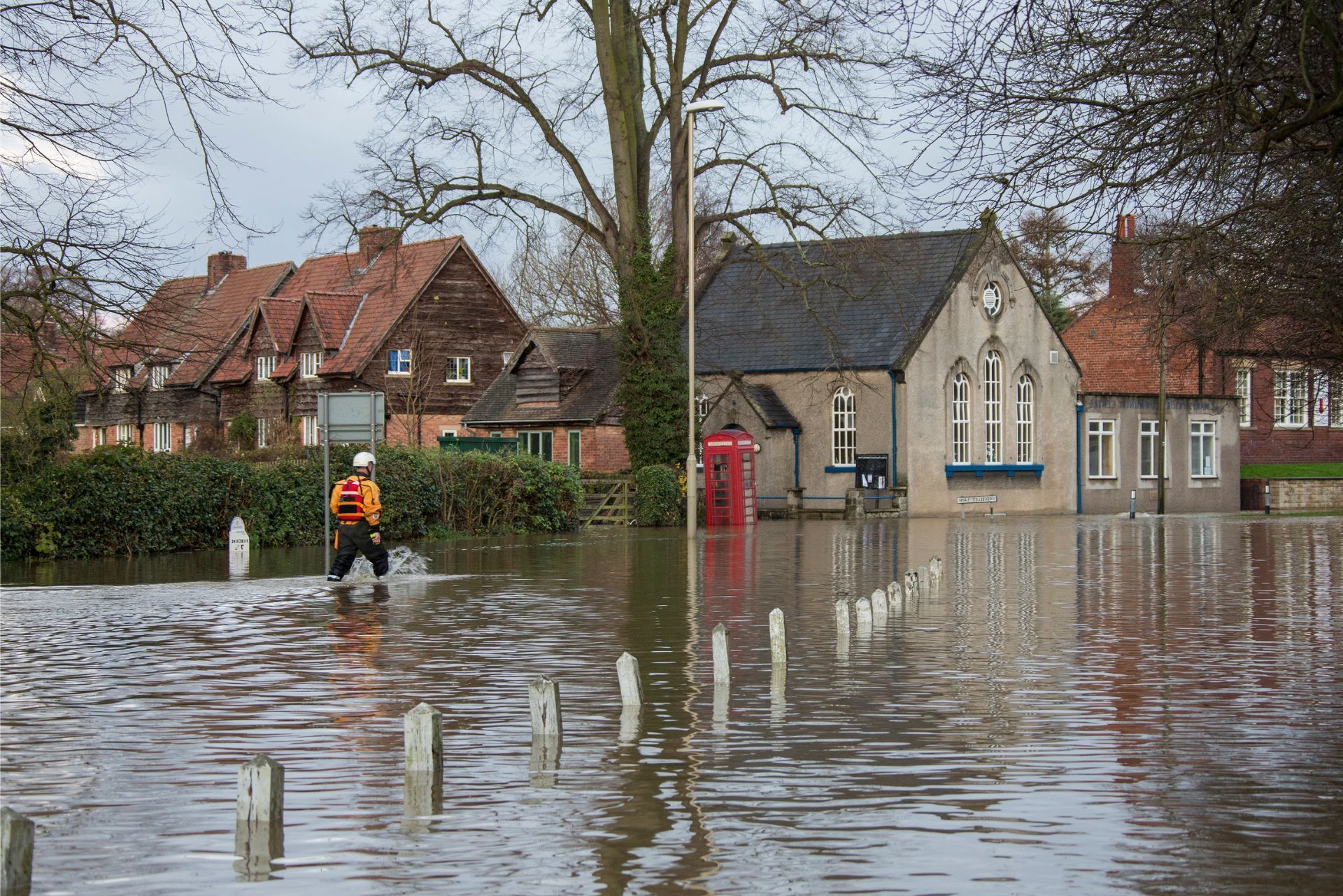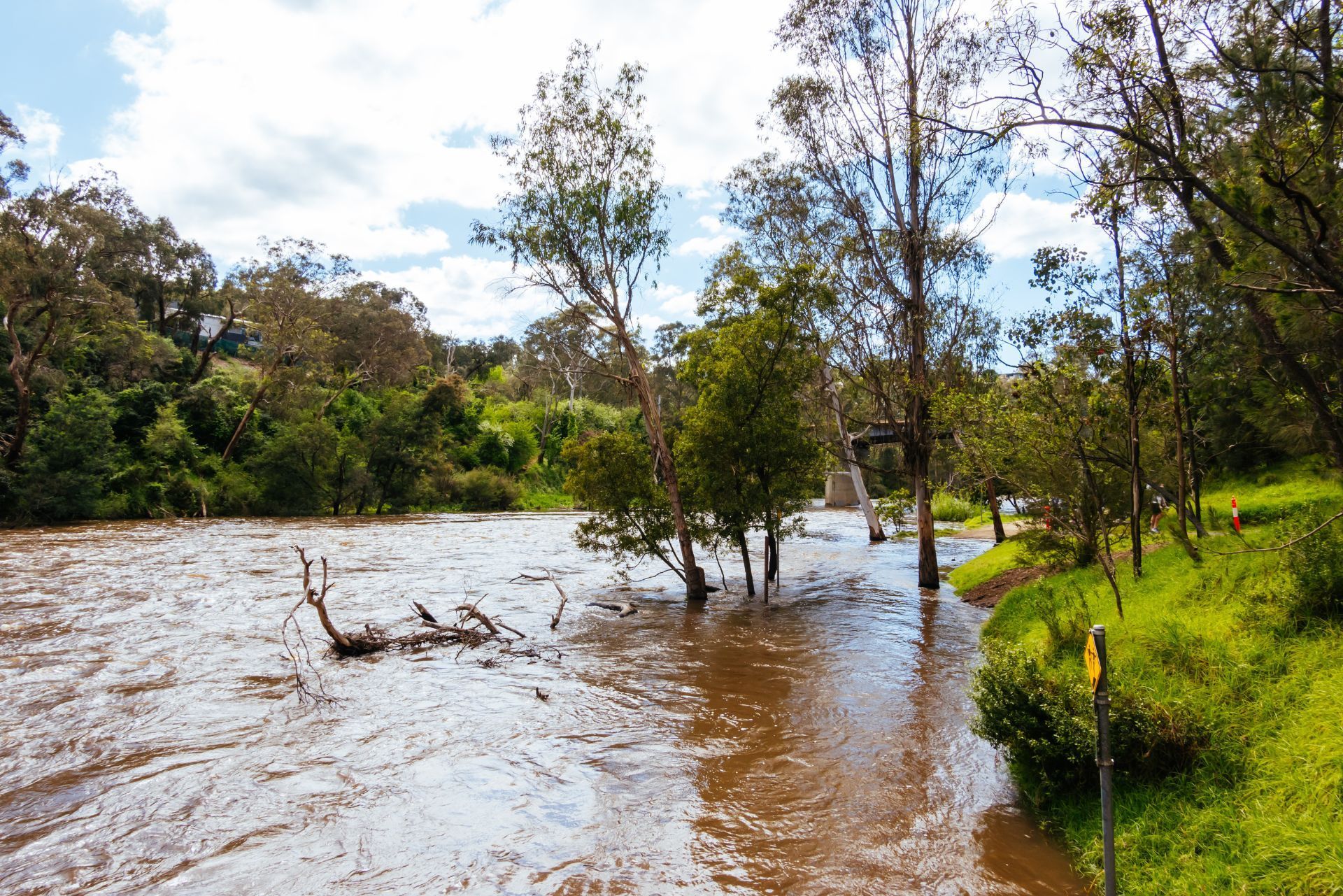Top 3 Recommended Policies

By: David Graves
Licensed Personal Insurance Specialist
425-320-4280
Living amid Washington’s lush forests, imposing mountain ranges, and winding coastal inlets can feel idyllic—until heavy rain, rapid snowmelt, or a king-tide turns a driveway into a shallow river. In the last two decades alone, the National Weather Service has issued more than 3,000 flood and flash-flood warnings for Washington counties, and the state’s Department of Ecology reports that an average of $150 million in flood damage occurs here each year. These numbers underscore a simple truth: standard homeowners and renters policies do not pay for flood damage. Only a dedicated flood insurance policy can shoulder that financial burden. The guide below demystifies how Washingtonians can assess risk, compare coverage options, control premium costs, and file claims with confidence after the water recedes.
Why Flood Insurance Matters in Washington State
Washington’s geography amplifies flood danger. Storm systems sweeping in from the Pacific often stall against the Olympic Mountains and Cascade Range, wringing out days of intense rainfall. Simultaneously, the state’s 3,000+ glaciers and deep winter snowpack can release a season’s worth of water in a single warm front, pushing rivers above their banks from the Canadian border to the Columbia Gorge. Recent modeling by the University of Washington Climate Impacts Group suggests that peak river flows could rise 22 percent by 2050 under moderate emission scenarios. Even low-lying urban areas that rarely flooded historically, such as the South Park neighborhood of Seattle or Vancouver’s Fruit Valley, now see routine street inundation due to aging drainage infrastructure overwhelmed by cloudbursts.
Against this backdrop, the Federal Emergency Management Agency (FEMA) counts more than 330,000 structures in Washington’s mapped Special Flood Hazard Areas. However, NFIP data from 2023 reveals that barely one-quarter of those properties carry an active flood insurance policy. Without coverage, households that experience flooding must rely on limited federal disaster grants—averaging just $5,000 to $7,000 per event—or personal savings to rebuild. Considering that a single inch of water can cause roughly $25,000 in damage to a 2,000-square-foot home, the protection gap is evident.
Moreover, the implications of inadequate flood insurance extend beyond immediate financial loss. Communities that face recurrent flooding often experience a decline in property values, which can lead to a vicious cycle of disinvestment and economic downturn. Local businesses may struggle to recover, and essential services can become strained as municipalities divert resources to address flooding aftermath instead of proactive infrastructure improvements. As climate change continues to exacerbate weather patterns, the need for robust flood insurance becomes not just a personal financial decision, but a vital community strategy for resilience and recovery.
In addition to the economic ramifications, the emotional toll on families affected by flooding cannot be overstated. The stress of losing personal belongings, the disruption of daily life, and the uncertainty of recovery can lead to long-term mental health challenges. Many residents find themselves grappling with anxiety and depression in the wake of such disasters, highlighting the importance of not only financial preparedness but also community support systems. Programs that educate homeowners about flood risks and insurance options can empower individuals to make informed decisions, fostering a culture of preparedness that benefits everyone in the community.

Understanding Flood Risk Across the Evergreen State
Coastal Hazards: Tides, Surge, and Erosion
More than 3,200 miles of shoreline wrap around Puget Sound, the Strait of Juan de Fuca, and the Pacific coast. During winter, deep low-pressure systems funnel storm surge into coastal communities such as Aberdeen, Ocean Shores, and La Conner. A full-moon high tide can add another foot, pushing salt water through storm drains and into basements. NOAA tide-gauge records show that sea levels in Seattle have already risen about nine inches since 1900, and the state’s Sea Level Rise Assessment projects an additional eight inches by 2050. As saltwater pushes inland, properties previously designated low risk may shift into higher premium zones. The implications of these changes are profound, not only affecting property values but also altering local ecosystems. Saltwater intrusion can disrupt freshwater habitats, impacting fish species that rely on specific salinity levels, and threatening the delicate balance of coastal biodiversity.
Riverine Flooding and Rapid Snowmelt
The Skagit, Snoqualmie, and Chehalis Rivers rank among the Pacific Northwest’s most flood-prone waterways. When atmospheric river events—nicknamed the “Pineapple Express”—pull subtropical moisture over the Cascades, rainfall totals can top ten inches in 48 hours. If temperatures hover above freezing in the mountain basins, snowpack liquefies and funnels down the same drainages. January 2009 offers a vivid case study: record rainfall and melting snow drove 29 Washington rivers above flood stage, closing Interstate 5 for four days and causing $125 million in insured losses. The repercussions of such flooding extend beyond immediate damage; they can disrupt transportation networks, delay emergency response efforts, and strain local economies as businesses grapple with recovery costs. Moreover, communities often face long-term challenges in rebuilding infrastructure that can withstand future flood events, necessitating a reevaluation of land use and zoning regulations.
Urban Stormwater Overflows
In densely built metro areas, hillsides channel water toward concrete valleys faster than catch basins can clear it. Seattle Public Utilities estimates that more than half of the city’s drainage system is 70 years old or older and lacks capacity for today’s downpours. Similar challenges exist in Tacoma, Bellevue, Spokane, and Bellingham. Because FEMA flood maps historically emphasized river and coastal threats, thousands of parcels in these cities technically fall into low-to-moderate risk zones; yet ground-truth data shows repeated basement flooding from localized flash events. Residents outside high-risk zones can, and often should, purchase lower-cost Preferred Risk Policies to safeguard against this growing peril. Additionally, cities are increasingly exploring green infrastructure solutions, such as permeable pavements and rain gardens, to enhance stormwater management. These initiatives not only mitigate flooding but also contribute to urban beautification and improved air quality, showcasing a holistic approach to managing the challenges posed by urbanization and climate change.
The Basics of Flood Insurance
Flood coverage in the United States is available through the National Flood Insurance Program (NFIP) and an expanding roster of private insurers. NFIP policies are sold by roughly 60 “Write Your Own” carriers, but all share identical terms and rates regulated by FEMA. Coverage comes in two categories: building (up to $250,000 for residential structures) and contents (up to $100,000). Policyholders may buy one, the other, or both; however, neither category covers additional living expenses or business interruption, so owners of multifamily or commercial buildings often augment NFIP limits with a private excess policy.
Under the NFIP’s Risk Rating 2.0 methodology—launched nationwide in 2021—premiums now reflect property-specific variables, such as distance to water, ground elevation, foundation type, and first-floor height, rather than simply the FEMA zone. This granular approach shifts more of the premium burden to high-value waterfront homes while lowering costs for many inland structures. Roughly 63 percent of Washington’s existing NFIP policyholders saw a decrease or negligible increase when the new rating rolled out, according to FEMA’s 2023 summary statistics.
Private flood insurers offer higher limit options, shorter waiting periods, and, for some well-elevated homes, premiums that undercut the NFIP. Policies are typically admitted (regulated by the Washington Office of the Insurance Commissioner) or surplus-lines (placed through specialized brokers). Owners should scrutinize policy wording: certain forms exclude basements, detached garages, or outdoor equipment unless specifically endorsed.
How Much Does Flood Insurance Cost in Washington?
The average NFIP premium in Washington currently sits near $935 per year, though actual costs range widely—from less than $300 for modest inland homes outside high-risk areas to well over $4,000 for coastal or riverfront properties with prior claims. Several factors influence the final price:
- Elevation: Homes elevated three feet above the Base Flood Elevation can see savings of 50 percent or more.
- Foundation type: On-slab and crawl-space homes pay higher rates than properly vented pier-and-post structures.
- Replacement cost: Risk Rating 2.0 ties portions of the rate to the cost to rebuild. A large custom home will face a higher premium than a cabin, all else equal.
- Claims history: Repetitive-loss properties incur surcharges that compound with each subsequent claim.
- Deductible: Choosing a $10,000 deductible instead of the standard $1,250 can lower the annual bill by 15-25 percent, though out-of-pocket risk rises accordingly.
Private flood insurance premiums mirror NFIP rating inputs but add proprietary models that weigh rainfall intensity, levee integrity, and even tidal harmonics. A 2024 market survey found that private carriers could save eligible Washington homeowners between 15 percent and 45 percent relative to the NFIP on about one-third of address simulations, particularly in medium-risk zones.
Buying Flood Insurance: Step-By-Step Guide
1. Confirm the Property’s Current Risk Designation
Enter the address into FEMA’s Flood Map Service Center, local public GIS portals, or a private-sector map engine. Note both the zone (e.g., AE, VE, X) and the Base Flood Elevation if one exists. Even if the home lies outside the mapped high-risk area, recent flood experience or new climate projections may warrant coverage.
2. Compare NFIP and Private Market Quotes
Most Washington-licensed property insurance agents can access both the NFIP and at least one private flood provider. Request a side-by-side illustration of limits, exclusions, waiting periods, and annual premium. The NFIP carries a 30-day waiting period for new policies unless coverage is tied to a loan closing or map revision, while private insurers commonly offer 10- to 15-day delays and sometimes next-day binding.
3. Choose Coverage Amounts and Deductibles
Calculate the replacement cost of the structure—many builders report $225 to $350 per square foot in 2024—and select a building limit that reflects that figure. For contents, tally high-ticket items such as appliances, electronics, and furniture. Opt for a deductible that balances budget comfort with liquidity during a disaster. Lenders on federally backed mortgages will dictate minimum coverage if the property sits in a Special Flood Hazard Area.
4. Submit an Elevation Certificate When Advantageous
Elevation Certificates are no longer mandatory for NFIP rating; however, if the document shows the lowest adjacent grade or machinery platform lies significantly above the Base Flood Elevation, uploading the certificate can trigger premium reductions. Hiring a licensed surveyor costs $600 to $900 in most Washington counties, but savings often offset that expense within two to three policy terms.
5. Bind Coverage and Mark the Calendar
Once you authorize the policy, keep digital and printed copies in a waterproof safe or cloud storage. Add policy renewal and hurricane-season reminders (yes, Pacific Northwest cyclones can form) to digital calendars. Non-payment cancellations are common sources of lapsed coverage when a flood hits.
Reducing Premiums and Mitigating Risk
Insurance is only one piece of a comprehensive flood strategy. FEMA’s grant-funded Hazard Mitigation Assistance program has bankrolled more than 400 elevation, acquisition, and flood-proofing projects in Washington since 2010. Structural interventions—such as elevating furnaces, installing flood vents, or constructing certified levees—can knock premiums down by hundreds annually, especially after a post-mitigation inspection updates the rating data.
Community participation in the NFIP’s Community Rating System (CRS) supplies further discounts. Twenty-seven Washington jurisdictions—including King County, Kent, and Skagit County—have earned CRS class ratings between 2 and 8, translating to 5 percent to 40 percent premium savings for residents. Engaging local officials to pursue higher CRS scores (lower numbers mean better classes) benefits every policyholder in the municipality.
Claims Process After a Flood
Time is crucial once water intrudes. NFIP policyholders must file a “Notice of Loss” within 60 days of the event, while many private insurers impose shorter deadlines. Start by contacting the insurance agent or 24/7 claims hotline, describing the extent of damage, and obtaining a claim number. Photograph high-water marks on walls, foundation, and exterior siding; keep samples of ruined carpet and drywall as physical proof for adjusters.
An adjuster will visit to prepare a scope of loss. Request the adjuster’s preliminary report and review it against personal repair estimates to spot discrepancies early. Payment often occurs in two phases: an initial advance for emergency work such as pumping and drying, followed by a final settlement check once repair contracts are approved. If disputes arise, policyholders can invoke appraisal, mediation, or, in the NFIP, the FEMA Claims Appeal process. Maintaining a detailed log of conversations, receipts, and contractor invoices significantly shortens resolution time.

Frequently Asked Questions
Does renters insurance cover my belongings after a flood?
No. Standard renters policies exclude flood as a named peril. Tenants can purchase a separate contents-only flood policy through the NFIP or private carrier. Premiums for a ground-floor apartment in a low-risk zone can run as little as $135 per year for $40,000 of protection.
Can I buy flood insurance the day before a storm?
Typically, no. The NFIP’s 30-day waiting period and most private carriers’ 10- to 15-day waits prevent last-minute purchases. However, if you are closing on a new mortgage or your property has been remapped into a high-risk zone, FEMA allows same-day coverage. Plan ahead to avoid an uncovered gap.
Is basement flooding always covered?
Coverage for below-grade areas is limited. The NFIP pays for structural elements, essential systems (furnace, water heater, electrical panel), and laundry appliances but excludes finished walls, flooring, and personal articles stored downstairs. Some private policies offer supplemental basement-content endorsements—review options if your property relies on finished basement living space.
What happens if FEMA updates the flood map and my zone changes?
If your structure is newly placed in a high-risk zone, you may qualify for a “Newly Mapped” NFIP policy starting at Preferred Risk rates, which then step up annually over five years. Private carriers may also offer grandfathering. Secure coverage before the map effective date to lock in transitional savings.
Can a levee or floodwall eliminate the need for insurance?
Levee accreditation can lower premiums by downgrading a zone, but no barrier is fail-safe. FEMA specifically recommends maintaining flood insurance even in areas protected by levees, as catastrophic overtopping or structural failure—seen in New Orleans, Iowa, and British Columbia—can inflict immense damage on formerly “safe” parcels.
Final Thoughts
Washington’s majestic landscapes are shaped by water, and that same force can become destructive with little warning. Whether residing on a Pacific Ocean bluff, a Snohomish County river island, or a Spokane cul-de-sac, property owners and renters face evolving flood hazards driven by climatic shifts and urban growth. Flood insurance remains the most reliable financial shield, transforming a potential six-figure rebuilding crisis into a manageable deductible. By understanding local risks, comparing policy options, embracing mitigation, and preparing for efficient claims handling, Washingtonians can preserve both their assets and peace of mind the next time the rain refuses to stop.

